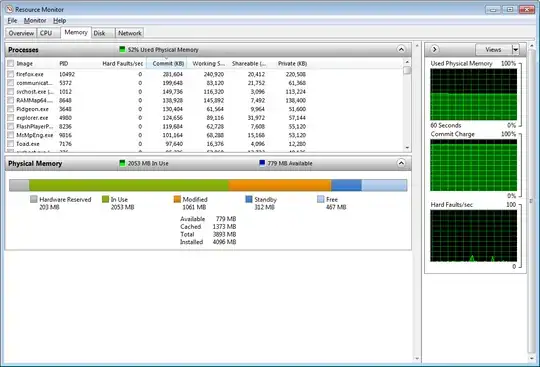This question follows the previous How do I precisely analyse the memory usage in Windows 7?
Why on a system where real processes eats only about 40% of physical memory (private working set) and the rest is somehow mysteriously eaten by operating system, kernel doesn't allow processes to allocate more memory even if there is still about 800MB of zeroed memory?

Is it possible to change kernel settings so that I can utilize 100% of operating memory? Right now, in task manager when I reach 80% of memory usage, kernel acts like if it was 100% because that's the edge when application starts to crash and are unable to allocate memory. How do I release these 20% so that I can utilize all memory I have up to 100%? Why these 20% are "reserved" and for what? The system is windows 7 64 bit with 4gb of ram in total. Swap is disabled for performance reasons. (hard drive is terribly slow and enabling swap makes the computer nearly unusable)

